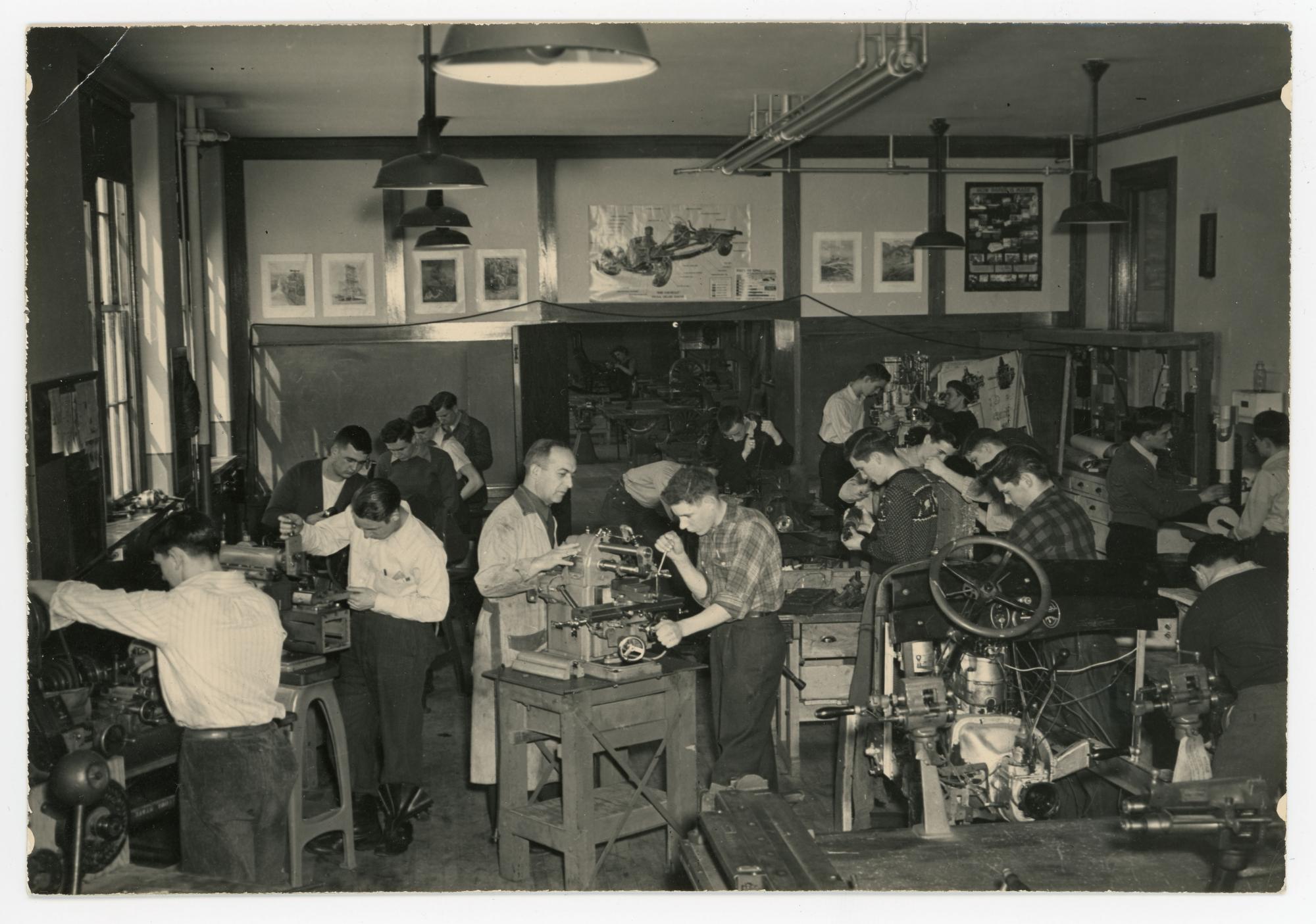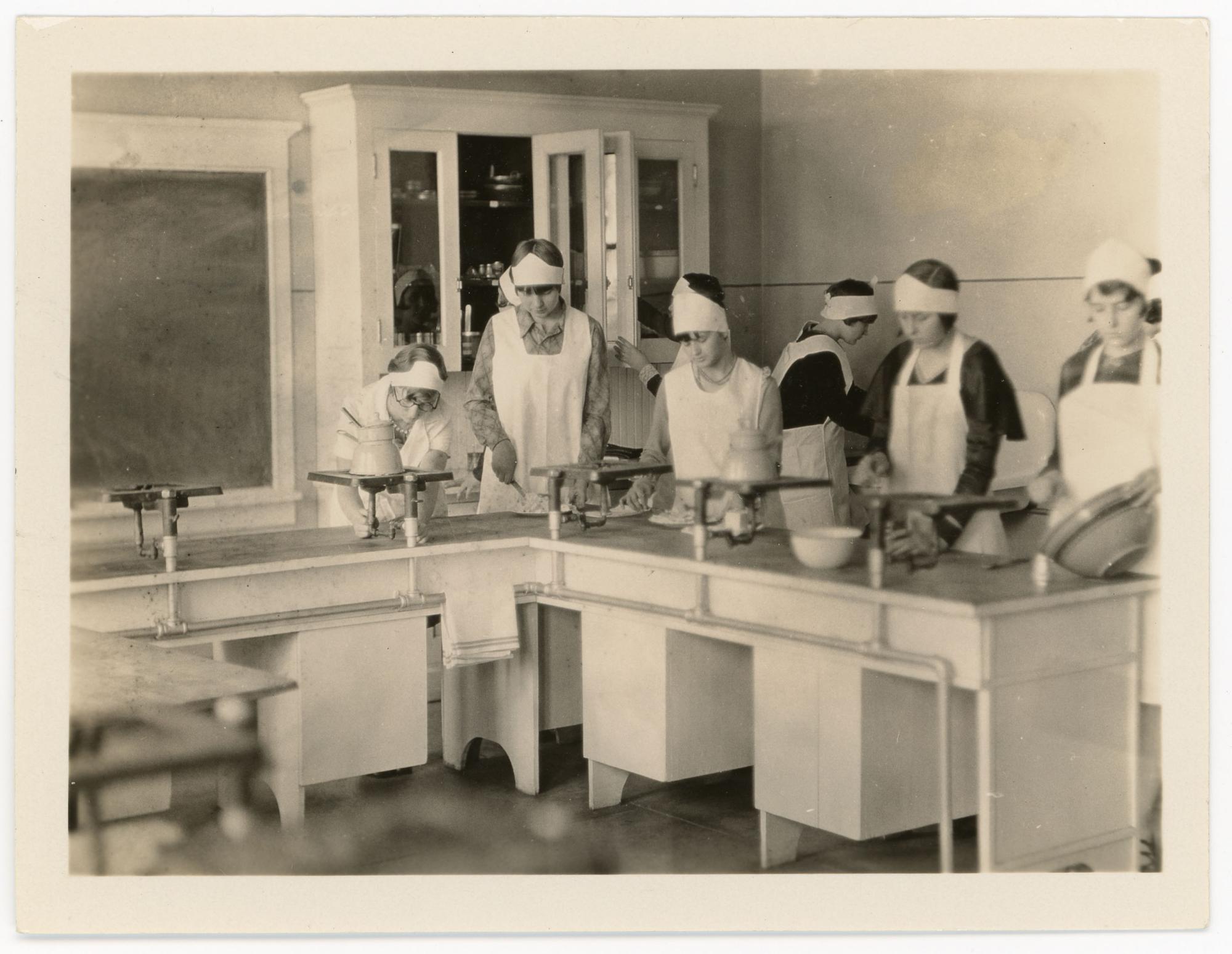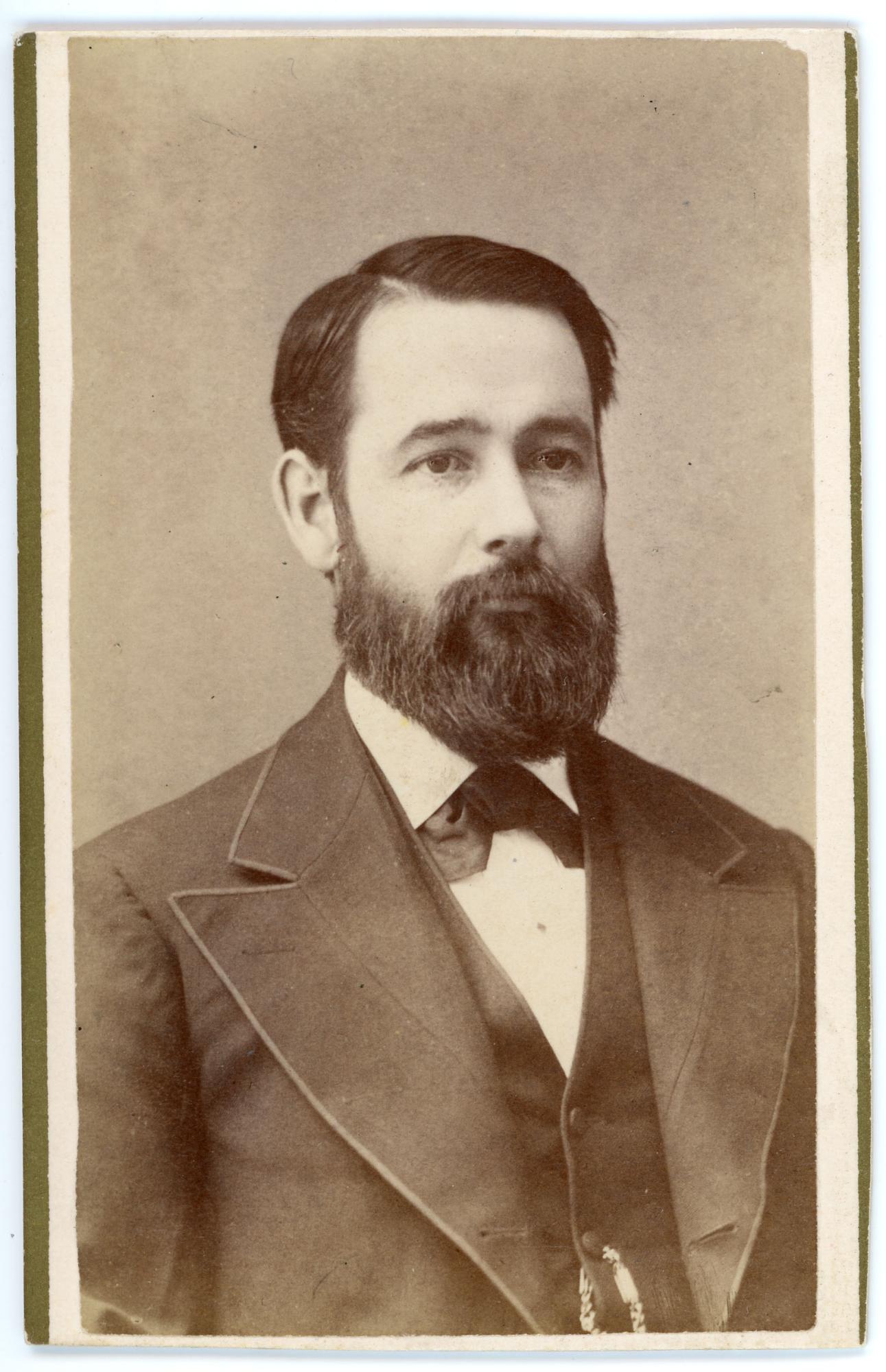Wright Hall (1915)

The Vocational Building, now known as Wright Hall, was part of a major program of facilities development aimed at meeting the needs of a growing enrollment and an expanded curriculum at the Iowa State Teachers College in the early part of the twentieth century. Other buildings constructed during that effort include a College Hospital, a new Training School (now Sabin Hall), and a women's dormitory (now Bartlett Hall). In 1912, President Seerley, with the support of Board of Education President James Trewin, proposed a new building to be used for instruction in domestic science, manual training, and agriculture. The Iowa General Assembly approved the project in 1913. The $100,000 project would be financed with funds collected under the millage tax, a statewide real estate levy. In March 1914, the Board approved both the Vocational Building project and the women's dormitory project and directed the architectural firm of Proudfoot, Bird, and Rawson to draw up plans. On December 17, 1914, the student newspaper, the College Eye, reported that the plans for the Vocational Building were complete. The new building would be located at the southwest corner of the quadrangle of classroom buildings on the Teachers College campus. It would be the last instructional building constructed on campus until work on the Men's Gymnasium (now West Gymnasium) began in 1925. Work got underway on the Vocational Building in early 1915.
By May 1915, college work crews were unloading stone and brick for the new building. A College Eye writer anticipated that the building "will be, not only a place of utility but also an object of architectural beauty." Superintendent of Buildings and Grounds James E. Robinson reported in September 1915 that the foundation was complete and that the walls were being erected. He hoped to have the building enclosed before cold weather arrived.
The Vocational Building opened for summer term students in 1917. The total cost of the project was $109,566. Students hailed the new building as a symbol "that marks this school as a pioneer in the field of vocational education and interest . . . ." The first floor was devoted to agriculture. The second floor housed manual training, the third floor housed domestic science, and the fourth floor housed art classes.



The use of the Vocational Building was remarkably stable from its beginnings down to the 1940s. While the study of agriculture waned somewhat in the 1930s, natural science took up the slack in that area. The study of home economics, art, and industrial arts continued to be strong. Other than an occasional paint job and some repairs to minor roof damage from a 1936 tornado, the building seems to have received little attention. But in 1941, the skylights, which had provided appropriate light to the art studios, were covered with conventional roof and wall structures. Officials were concerned that continuing leaks around the skylights might damage the building. The north windows, again built for artists seeking natural light, remained in place. A reporter for the College Eye strolled through the Vocational Building in 1946 and found natural science specimens and microscopes on the first floor, engines and woodworking machines on the second floor, cooking equipment, sewing forms, and model home economics layouts on the third floor, and arts and crafts projects on the fourth floor.
By the middle 1940s, the college was promoting the construction of a new Vocational, or Arts and Industries Building. Professor Harold Palmer, head of the Department of Arts (which included Art and Industrial Arts), noted substantial shortcomings in the old building, such as the lack of an elevator. A shaft had been built during the building's original construction, but, due to a lack of funds, an elevator had not been installed. Consequently, hauling heavy motors and machinery to shops on the second floor and five hundred pound barrels of modeling clay to the fourth floor were significant problems.


When the new Arts and Industries Building (now Latham Hall) opened in 1949, art and industrial arts classes moved out of the Vocational Building and into the new building. After portions of the old Vocational Building were remodeled in a two year project beginning in 1949, the biology portion of the Department of Science occupied the first and half of the second floor, mathematics occupied the other half of the second floor, and the remaining space was occupied by mathematics and home economics. The Department of Home Economics received six new kitchens during the remodeling project, which was completed in 1951.
For its first forty years, the building was known by a functional name, the Vocational Building. However, in April 1957, the name of the building was officially changed to David Sands Wright Hall in honor of David Sands Wright, a member of the original faculty of the school when it opened in 1876.
Professor Wright taught English literature from 1876 until 1881, when he began teaching mathematics. In 1916, he became the Supervisor of Religious Education. He served the institution for fifty-three years.
The heating system in Wright Hall was improved in a 1962 project. Also, in 1968, when science classes moved into the newly completed Science Building (now McCollum Science Hall ), biology laboratories in Wright Hall were remodeled into classrooms and offices. In 1971, a $71,000 project added a home economics laboratory. In 1978, an elevator was finally installed in a $72,000 project. Wright Hall also received significant roof repairs in the middle 1980s.


In spring 1990, after completion of an extensive remodeling project in Latham Hall, the Department of Home Economics moved out of Wright Hall. In fall 1990, a major renovation project got underway in Wright Hall. The $2.7 million project included an overhaul of the building's heating, ventilation, and air conditioning system, improvements in handicapped accessibility, installation of new windows, and upgrades in computer and electrical network capabilities. Brooks, Borg, and Stiles of Des Moines were the architects for the project, which was scheduled for completion in December 1991. The project would provide better and more functional classrooms and offices for the Departments of Mathematics and Computer Science. On November 14, 1990, the Board of Regents awarded the general contract for the work to Prairie Construction Company of Waterloo. Young Plumbing and Heating of Waterloo won the plumbing contract. Mennenga Electric, Incorporated won the electrical contract.
The project was completed on time, and classes were offered again in the spring 1992 semester. Wright Hall was re-dedicated on March 11, 1992, with tours and a formal ceremony. Mathematics Professors Joel Haack, David Duncan, and Augusta Schurrer presented remarks at the ceremony.
Wright Hall is unique on the University of Northern Iowa campus in that there are inscriptions carved into the limestone trim over two of its entrances. The northeast entrance bears the words, "Do not do what is already done."


The southeast entrance inscription says, "For the people had a mind to work." This is a portion of the Bible verse found at Nehemiah 4:6 (King James Version): "So we built the wall; and all the wall was joined together unto the half thereof; for the people had a mind to work."
President Homer Seerley chose both of the inscriptions.
Compiled by Library Assistant Susan Witthoft; edited by University Archivist Gerald L. Peterson, July 1996; substantially revised by Gerald L. Peterson, with research assistance by Student Assistant Sara Nefzger and scanning by Library Assistant Gail Briddle, April 2004; last updated, March 6, 2012 (GP); photos and citations updated by Graduate Assistant Eliza Mussmann April 18, 2023.
